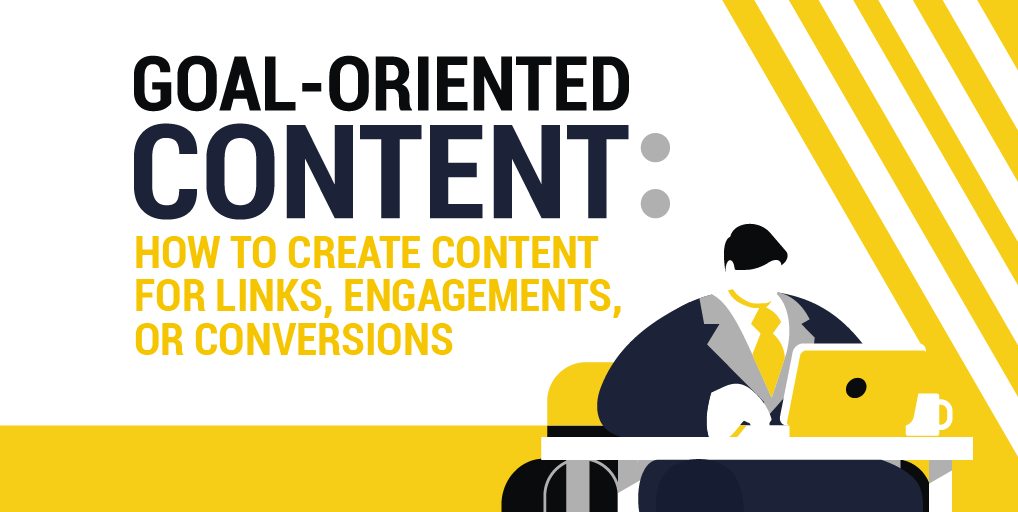There’s no denying the fact that digital marketing has turned into one of the most powerful forces in the marketing industry. It’s generally recognized as a highly effective tool when it comes to putting your brand out there. Right at the fore is content marketing, where you create, publish, and distribute valuable content with the objective of attracting prospects and turning them into customers.
This is a great way to grow your business, so it’s not surprising that content marketing adoption is at an all-time high, with most brands churning out content on a regular basis. This may be great for your marketing efforts overall, but many brands aren’t properly optimizing their content to support their desired objective.
Coming up short in properly optimizing your content is inherently bad since you won’t be able to maximize the potential of the content that you’ve spent so much of your time and resources building. You wouldn’t want all your efforts to go to waste, so you should work smarter in achieving your goals.
The only way to pull this off successfully is to determine the type of content that fits your objective. This will help you streamline your content marketing strategy and align it with your business goals. If you do it right, pretty soon you’ll get the desired results.
The Importance of Goal-Oriented Content
Not long ago, people were creating content just for the sake of doing so. Perhaps they were told that a guaranteed way to boost their online presence is to publish a 500-word blog on the regular since Google is partial to fresh content. At least that’s what 60 percent of B2B marketers think.
On the other hand, maybe they’re in the practice of churning out as much content as possible, focusing on quantity instead of quality. If this is generally what your content strategy is made of, you better stop and think things over.
The key to producing content is knowing its purpose. If you’re publishing content just to keep your blog looking active and keeping up with the frequency, you’re not understanding the point of it all. You should be creating content for the purpose of achieving specific goals during the development process.
Your content should be working toward broader marketing goals while being able to justify to anyone why you took the time to write and publish either a blog or an infographic. It should always be about your customers and how to enrich their lives through what you offer.
Goal-oriented content is what drives your business towards success. When prospects can easily find your content and get value out of it, they’ll be far more inclined to eventually buying the product or service you’re trying to sell. There must always be an objective so that you can build your content marketing strategy around it.
Here at Spiralytics, we focus on three main goals for each piece of content we produce: for engagement, SEO, and conversions. Because of this, we’ve been finding it easier to hit our targets, leaving our clients highly satisfied with the results that come out of our efforts. Refer to this infographic to give you a deeper understanding of how you should create your content:

Also Read: 101 Guide to Internal Linking - Spiralytics
Your Optimization Strategy Depends on the Content’s Goal
There’s no cookie-cutter way of approaching content marketing that’ll get favorable results when trying to achieve specific goals. How you optimize specific content will differ based on our objectives, and it’s essential to first set them, so you can determine how to optimize them properly.
-
Content for Engagements
When building an audience, content is what drives people to your website. But with the mass production of online content and Google’s constant algorithm changes, content quality and value will always be a top priority. If your content is good, it should be engaging. And if it’s engaging, expect traffic to increase.
To ensure you’re on the right track, try to create compelling content that triggers emotions from your readers. This increases the chances of piquing their interest and eventually sparking engagement. Avoid sticking to one type of medium when communicating with your subscribers and utilize other types to add “spice” to your content. To optimize them for maximum engagement, here are a few more tips to consider:
- Use plenty of headings so it’s scannable and easy to follow. Use good formatting practices like including subheadings, bullet points, and lists to make sure that your readers stay on the page.
- Don’t forget that your keywords aren’t just for SEO purposes, but also for your readers to stay on track so they continue to read and “engage” with your content.
- Create your own voice since the most engaging type of content is one that’s unique and follows a specific delivery technique. One of the best ways to do this is to align your writing with your thinking and speaking pattern. This gives readers a fresh perspective as you add a different dimension to the quality of your content.
- Produce interesting titles to catch the attention of your readers. On average, 80 percent of people will read your headline copy, but only 20 percent will read the rest of your content. Remember, this is the first thing they’ll see, so make it count.
- Make your content shareable by adding social media widgets, making it easier to share with a click of a button.
-
Content for Links
With all the types of content you can publish, there are only certain ones that can be considered link-worthy. People link to content that they find useful, entertaining, unique, and insightful. You should also keep in mind site, brand, and publisher reputation since your goal is to establish an authority in your niche.
Google uses links as a trust signal in their algorithm since people tend to link more to trusted authorities online, which also helps influence search rankings. Authoritative sites generally have larger audiences and visibility, making it easier to acquire links. In fact, 21 percent of Google’s ranking algorithm depends on link authority features or the number of links to a domain.
If your site is relatively unknown, your content strategy should include building authority through earning links and social shares. To do this, you’ll need to create linkable content that’s well-researched and often tackle potentially complex subjects in a highly comprehensive manner.
Creators of linkable content are authority figures who have established credibility in their own niche. To achieve this, you’ll need to keep these tips in mind:
- Use well-researched content that incorporates original data, concepts, or opinions. You’re far more likely to attract links if your content is the only one of its type.
- With 91 percent of smartphone users using their device to look for information instantly, it’s prudent to create how-to content for links.
- Use visually striking images, whether it’s an infographic, a map, or a visual guide, so your content will not only be more linkable but also be much easier to read.
-
Content for Conversions
Your end goal as a business is to turn your prospects into profitable conversions, so your content should move audiences and get them to take action. This will turn your visitors into leads, leads into customers, and customers into brand advocates.
As you can see, strong conversion-focused content is vital in your content marketing strategy. You should cast a wide net your efforts in your pursuit of brand awareness. To do this, utilize different channels to promote your content. This way, you can position your brand as a thought leader in your industry.
You’ll need to present a problem that your brand can address. Publish more long-form content that’s packed with visuals, and at the same time, gives your readers actionable advice. Long-form content is also good for your ranking, and it gets more views and shares, making it a worthwhile endeavor in your content marketing efforts.
As a thought leader who can address a problem with what you offer through your conversion-oriented content, it’s going to be easier to attract your audience, turn them into leads, and eventually convert.
What’s Your Content’s Goal?
After establishing your goal, only then can you build an effective strategy around it, be it for engagement, search engine rankings, or conversion. When done well, purpose-driven content marketing will enable you to build and establish rapport with your target audience, making it easier to achieve your business goals. You won’t be relegated to just churning out content regularly without any real value and purpose, like a lost explorer aimlessly wandering through the desert with no real place to go.
Our team of experts at Spiralytics are well-equipped to lend your business a hand. We help you create goal-oriented content that systematically drives you towards your business objectives. We treat our clients as partners with one purpose in mind: grow their business with the numbers to back it up.
When it comes to content marketing and digital marketing in general, Spiralytics, a content marketing agency services provider, is the company you need for your business. Inquire now!





